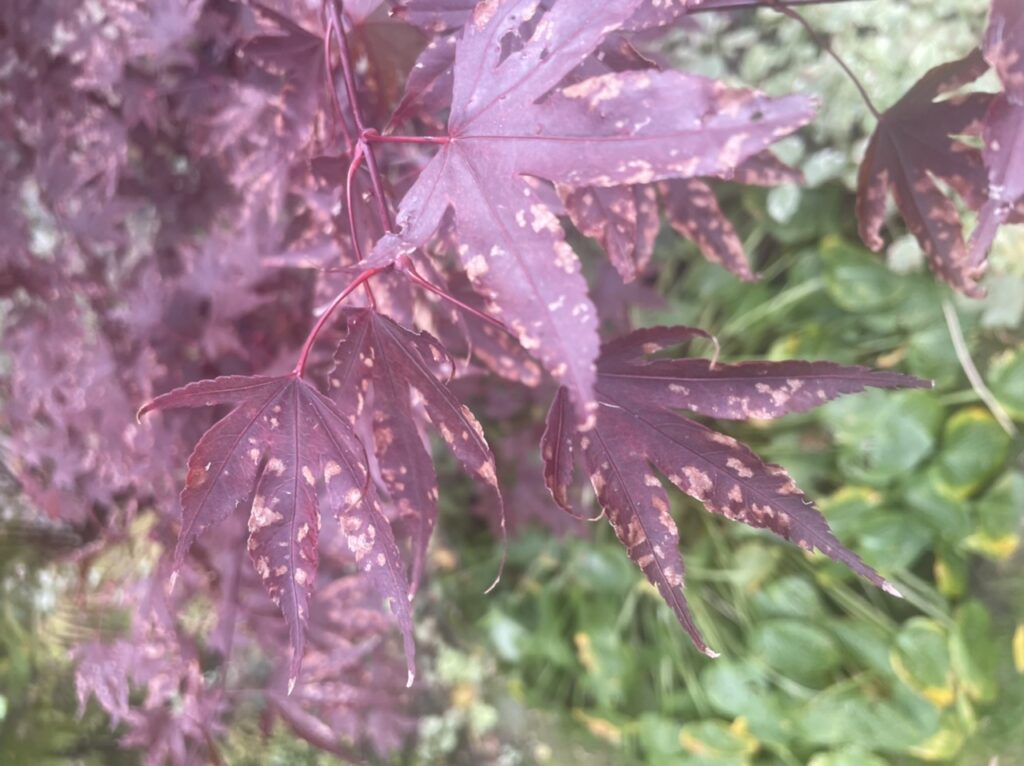
Hello
The leaves have brown spots – not particularly raised.
Most, but not all the leaves are affected. I can’t see any insects on top or underneath the leaves.
Are you able to identify the problem and perhaps recommend how to treat?
Many thanks!
Kind regards
Sherri
Thank you for contacting the Toronto Master Gardeners.
Japanese Maples are such a beautiful addition to the garden that when they show signs of issues, we tend to think the worst, but that is not always the case.
There are many potential reasons the foliage of your tree has these brown spots so let’s start with the more common ones.
- Over watering.
- Underwatering.
- Heavy soil with poor drainage where roots are waterlogged.
- Over fertilizing.
- Sun scald due to overhead watering.
- Time of year – Autumn, when leaf senescence naturally occurs in all deciduous trees.
- Mechanical damage – leaf blowers are the most common culprit.
Other reasons may be an insect infestation or a disease.
At this time of year, insect damage like this is unlikely, but it’s worth having a good look at the leaves (especially underneath), trunk, branches and twigs for any indication of an infestation. If you do identify a pest, then a visit to your local garden center or nursery would be advisable to see if there is a treatment in stock and when it should be applied.
Fungal, viral or bacterial diseases generally spread in hot, wet, humid weather so you would have noticed this damage earlier in the growing season. These diseases can be spread by insects, wind or water splash. If you are interested in looking up diseases of Japanese Maples to compare photos with your actual tree, then these seven would be a good place to start – Anthracnose, Powdery Mildew, Tar Spot, Alternaria leaf spot, Bacterial leaf spot, Phyllosticta leaf spot and Septoria leaf spot.
The above being said, at this stage in the season, I would advise patience and good cultural practices when putting your garden to bed for the winter. By this I mean, cleaning up “all” garden leaf debris from a large area around your tree and disposing of it with your garden waste and not adding it into a home composter. Also, if you are doing any pruning/cutting back of this tree, make sure you sterilize any pruners, loppers or saws (pruning can be done once the leaves drop and into the winter while the tree is dormant – do not prune in spring).
Once spring comes around, watch your tree carefully as trouble detected early and treated is preferable. The addition of a good compost or well rotted manure topdressing should be all the feeding needed. Watering is best done from below (e.g. drip irrigation), water the soil and not the plant which will keep the leaves dry and minimize potential pathogen transmission.
Hope this information is helpful.
27/10/23

